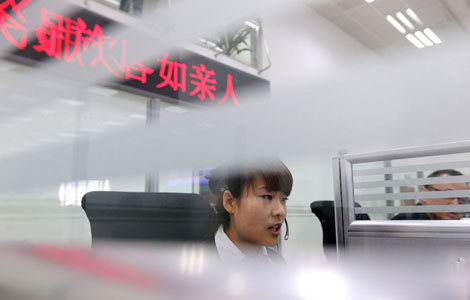China still key destination for retailers' expansion
Updated: 2013-12-23 11:18
By Zhang Yuwei (China Daily USA)
|
||||||||
"Moreover, they have helped change and shape how younger generations in China eat, drink and live in modern day China," said Song, adding such expansion will continue as consumer spending continues to rise and as the taste profile of the Chinese population continues to evolve.
The past year may not have been a fruitful one for Yum, as the company saw a sharp decline - around 10 percent - in its China earnings for the first three quarters due to safety concerns over its poultry supply.
S&P in its study predicted that the negative trend for Yum in China will moderate in the coming year and store sales will "turn positive" in 2014 because of the company's commitment to localization in menu initiatives and customer outreach.
As many economists have pointed out, China's slower growth - currently at 7.8 percent compared to its one-time double digit pace - will be suitable for the country to reconsider its growth model. China, as many experts suggest, needs to shift from an investment economy toward a consumption-driven model. The S&P study points out that growing domestic demand will likely benefit Western retailers that execute successfully in China.
US retailers expansion in key international markets such as China is a supporting factor for S&P's ratings, as it strengthens the business risk profile through greater scale and geographic diversity, as well as better competitive advantage, operating efficiency, and profitability over time, according to the study.
But the future of these retailers in China does face challenges, both among themselves and among China's domestic brands.
"We believe opportunity remains in China for some US retailers, but we also believe competition will become increasingly intense," Song noted. "Local companies are growing and competing more aggressively, leading international players are expanding and fighting for market share, as operating costs and real estate costs continue to rise.
"Both Wal-Mart and Gap face tough competition, from competitive local players, such as China Resources Vanguard and Yonghui Superstores for Wal-Mart, to large international players such as Carrefour for Wal-Mart, and Zara, H&M and Fast Retailing for Gap," Song explained.
For retailers like Wal-Mart and Gap, e-commerce has also posed challenges in its sales figures, especially in China where e-commerce is taking off rapidly. China had a $200-billion sales record in e-commerce last year with companies such as Alibaba being the major boost to the online economy and the growing number of Internet users in China (which currently is around 590 million - more than the whole US population).
"We expect to see Wal-Mart and the Gap grow in China through both adding physical stores and expanding their online capability," said Song.
Contact the writer at yuweizhang@chinadailyusa.com

 US skiing star Lindsey Vonn out of Sochi Olympics
US skiing star Lindsey Vonn out of Sochi Olympics
 Check out cool new gadgets from CES 2014
Check out cool new gadgets from CES 2014
 Cold snap sweeps US
Cold snap sweeps US
 Pollution's effect on health not clear yet, officials say
Pollution's effect on health not clear yet, officials say
 Russia imposes security clampdown in Sochi before Olympics
Russia imposes security clampdown in Sochi before Olympics
 X-ray reveals crying toddler had 5-cm needle inserted in his lung
X-ray reveals crying toddler had 5-cm needle inserted in his lung
 Tokyo urged to end militarism
Tokyo urged to end militarism
 Military drill in SW China
Military drill in SW China
Most Viewed
Editor's Picks

|

|

|

|

|

|
Today's Top News
US-China trade deficit narrows, again
Staying ahead of the game
Odierno: US, China to work on issues
China is importing more US-built cars
Reform plan faces `challenges’: Professor
US jobless bill clears Senate hurdle
Syria chemical weapons shipped out
Solar firms face 'total eclipse' in US
US Weekly

|

|






